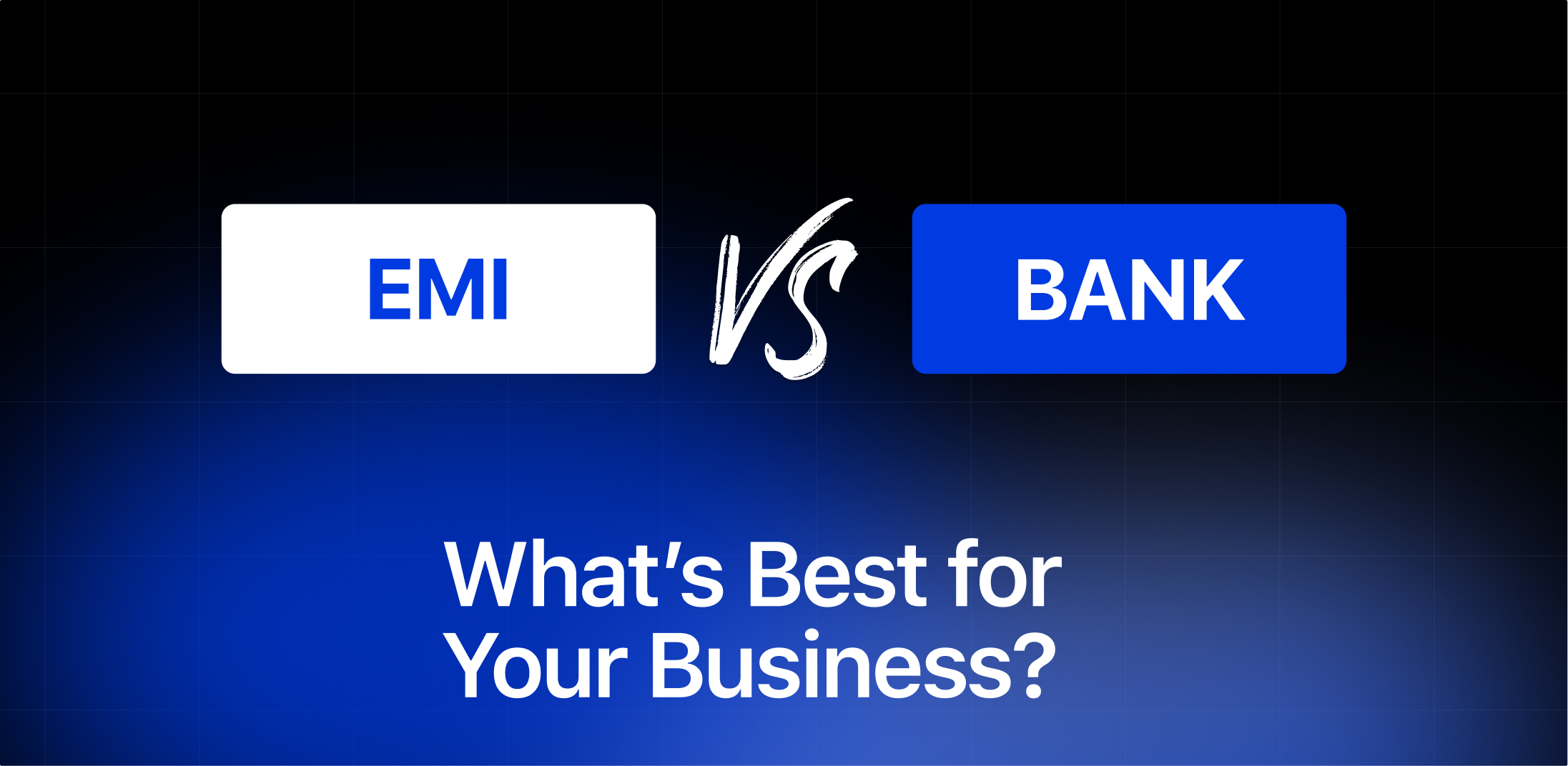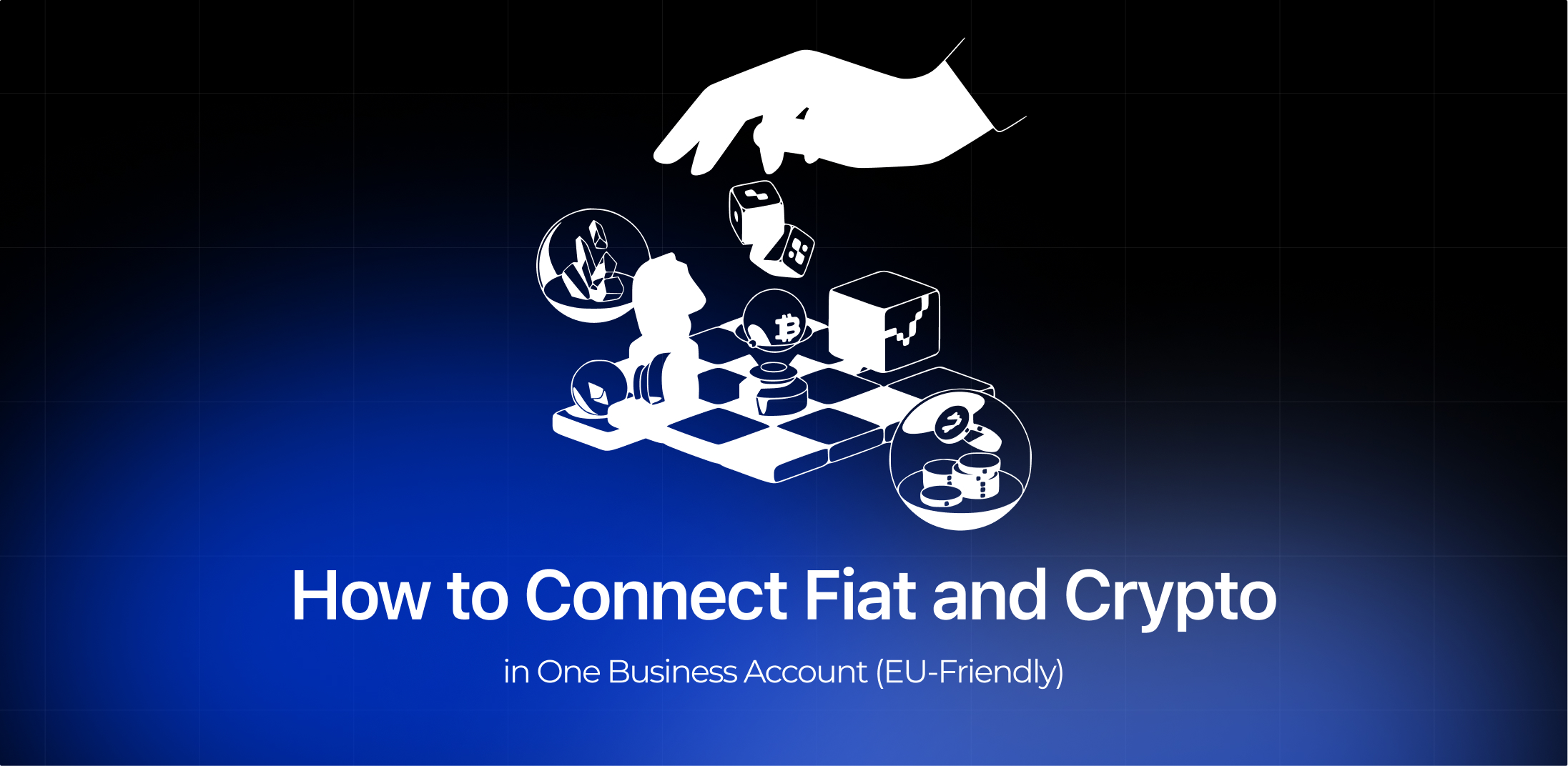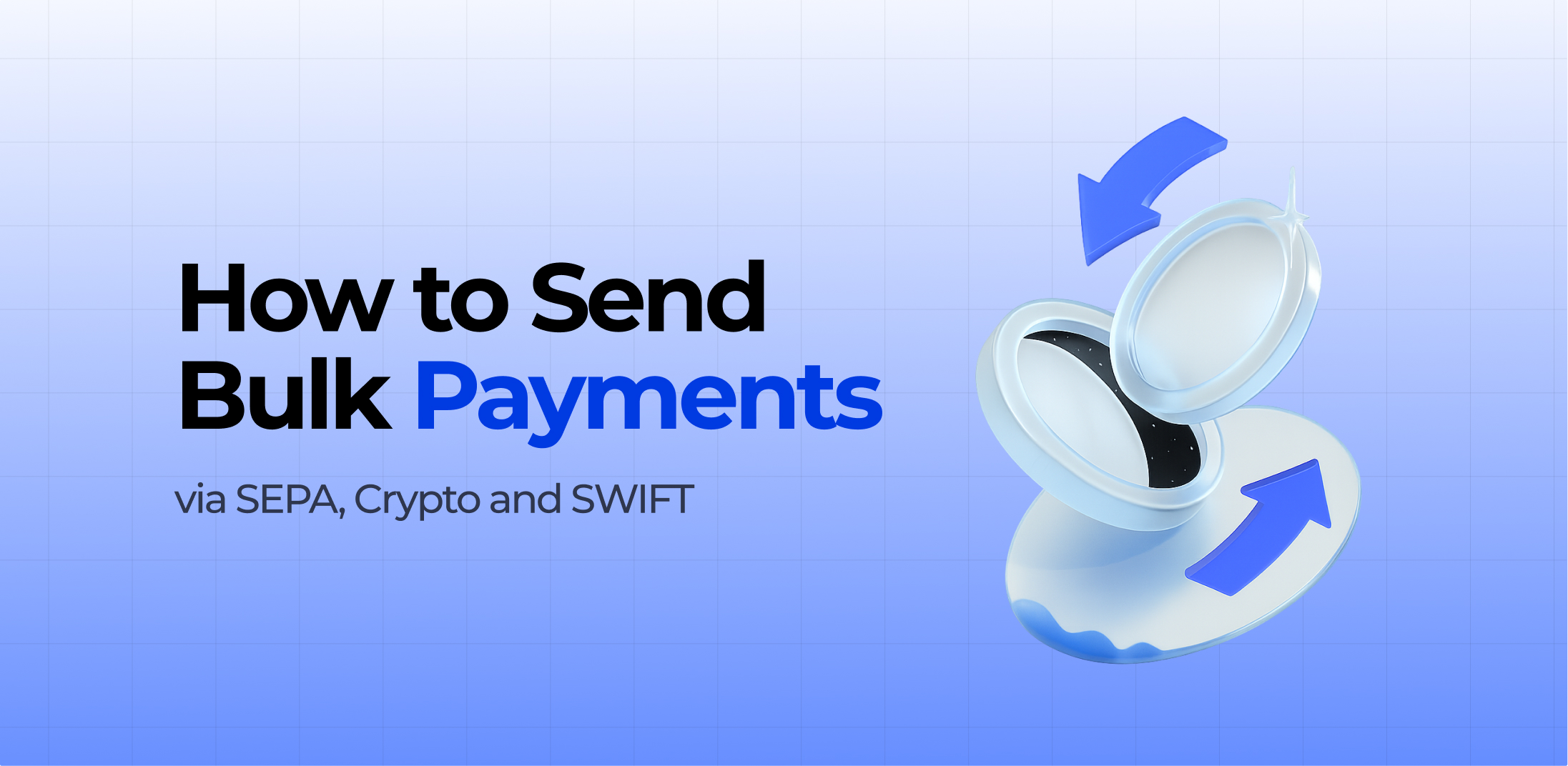In today’s rapidly evolving digital landscape, the way companies handle their financial operations has undergone a significant transformation. While traditional banks were once the standard go-to for opening business accounts, obtaining financing, and handling international transactions, a new wave of financial institutions has entered the scene – Electronic Money Institutions, or EMIs.
Gone are the days when business banking meant navigating endless paperwork, waiting weeks for account approval, or relying on physical branches. Today’s businesses, particularly startups, global service providers, and online merchants, demand agile, tech-driven solutions. This demand has sparked growing interest in EMI vs traditional bank – Banking Alternatives, as companies seek faster, more flexible ways to manage their finances.
So, which option is better for your business: an EMI or a traditional bank? The answer isn’t one-size-fits-all. It depends on your industry, the complexity of your transactions, and how comfortable you are with digital-native platforms. In the sections ahead, we’ll compare EMIs and traditional banks across critical areas, outline the pros and cons of each, and help you decide which approach aligns best with your business’s financial strategy.
What is an EMI?
An Electronic Money Institution (EMI) is a licensed financial provider that delivers many essential banking services – without holding a traditional banking license. These institutions are authorized to issue electronic money and facilitate a wide range of payment services, positioning them as a leading traditional bank alternative for companies that value speed, innovation, and global access.
EMIs cater to the evolving needs of modern businesses by offering:
- Digital business accounts;
- Individual IBANs for seamless transactions;
- SEPA and SWIFT capabilities for international transfers;
- Multi-currency account options;
- Real-time online account access;
- API connectivity for payment automation and integration.
While EMIs do not typically provide credit lines or loan facilities, they excel in handling payment flows, safeguarding client funds, and enabling international financial operations. They are regulated under stringent frameworks – such as by the Financial Conduct Authority (FCA) in the UK and comparable regulators across Europe and beyond – to ensure compliance, financial transparency, and secure fund management.
Thanks to their tech-driven approach, EMIs have become especially attractive to startups, digital businesses, and cross-border service providers. As a traditional bank alternative, they remove friction from global finance and offer the flexibility needed in today’s borderless digital economy.
What is a Traditional Bank?
Traditional banks are well-established financial institutions licensed to offer a wide spectrum of services to both individuals and businesses. In the realm of business banking, they have long been the standard solution for managing finances, from opening a basic current account to securing large-scale business loans.
Common services provided by traditional banks to business clients include:
- Business checking and savings accounts;
- Access to credit lines and corporate loans;
- Overdraft facilities;
- Merchant payment solutions;
- International transfers via the SWIFT network;
- Personalized assistance at physical branch locations.
A major strength of traditional banks is their reputation for reliability and long-standing trust. Many of these institutions have been operating for generations and are seen as secure, especially for businesses requiring complex financial services or large credit facilities. The in-branch support and full-service infrastructure make them appealing to companies that value traditional banking relationships.
Yet, when examining the EMI vs bank comparison, a different picture emerges. While banks offer comprehensive services, they can be slower to adapt, less transparent with fees, and limited in digital flexibility. This has prompted many modern businesses to seek out EMI benefits—such as faster onboarding, global accessibility, and user-friendly interfaces.
Though traditional banks still play a crucial role—particularly for credit-heavy operations—EMIs have become a smart alternative for businesses focused on agility, technology, and international growth.
EMI vs Traditional Bank Comparison: Key Differences

When deciding between a traditional bank and an Electronic Money Institution (EMI) for your business needs, understanding the critical distinctions is key. Although both provide essential financial services, they differ significantly in terms of structure, agility, and technological approach – factors that can greatly influence your business’s efficiency. Especially for companies operating online or across borders, these contrasts matter. The following EMI vs bank comparison breaks down the main areas where these two models diverge, helping you make a more informed choice.
| Category | EMI | Traditional Bank |
| Licensing & Regulation | Regulated as financial institutions (e.g., FCA in the UK), but not full banks | Fully licensed banks under national banking authorities |
| Account Setup Time | Fast and fully digital—often within 24–72 hours | Slower, with manual checks—can take days or weeks |
| International Transfers | Strong support for SEPA, SWIFT, and alternative payment rails | SWIFT transfers available; limited innovation in payment tech |
| Currency Options | Wide range of multi-currency accounts, often with real-time FX rates | Typically limited currency options and less competitive FX rates |
| Fees & Transparency | Clear pricing models, lower fees, and no hidden charges | Higher transaction and maintenance fees, often with complex pricing |
| Flexibility | Built for agile, global businesses; open APIs and automation tools | Rigid infrastructure, slower to adapt to new tech |
| Physical Presence vs. Digital Interface | 100% digital, no physical branches | Physical branches available; limited digital innovation |
| Customer Support | Online/chat-based support, often fast and responsive | Phone or in-branch support; can vary in speed and availability |
The table above on EMI vs traditional bank – Banking Alternatives outlines the core distinctions that can shape how your business manages its finances. EMIs stand out for their speed, cost-effectiveness, global functionality, and seamless tech integration—qualities that particularly benefit startups, digital-first companies, and businesses with international reach.
Conversely, traditional banks continue to provide important strengths, especially for organizations needing access to credit, tailored financial planning, or a higher level of regulatory backing. Their brick-and-mortar presence and established reputation make them a preferred choice for businesses with more conventional or capital-intensive operations.
Choosing between an EMI and a traditional bank ultimately comes down to your company’s needs – whether you prioritize agility and automation or require complex banking relationships and credit facilities. For many, the most strategic path may be a hybrid model that leverages the innovation of EMIs alongside the financial stability of banks. Next, we’ll dive deeper into the specific EMI benefits that are driving their growing popularity among modern, growth-oriented businesses.
Electronic Money Institutions Benefits for Businesses

Electronic Money Institutions (EMIs) are reshaping the way businesses manage their finances by offering modern, digital-first alternatives to traditional banking. Built for agility and international scalability, EMIs provide a streamlined experience that aligns with the needs of today’s tech-savvy, fast-growing companies.
Quick Onboarding and Digital KYC
A major advantage of EMIs is their rapid onboarding process. Unlike traditional banks that often require extensive documentation and prolonged verification, EMIs use digital Know Your Customer (KYC) tools to verify and activate accounts within a matter of days – sometimes even hours. This is particularly valuable for startups and SMEs that need immediate access to financial services without bureaucratic delays.
Global Payment Solutions and Multi-Currency Support
Businesses with international operations benefit from multi-currency accounts and access to global payment networks. EMIs support transactions via SEPA, SWIFT, and other local payment infrastructures, allowing businesses to hold and transfer funds in various currencies with ease. This reduces reliance on multiple banking partners and simplifies cross-border transactions.
Advanced Integrations and Automation Tools
EMIs also cater to digitally native businesses by offering open APIs and integration tools. These enable seamless connectivity with accounting systems, online marketplaces, and ERP software, allowing for automated workflows such as bulk payments, reconciliation, and real-time reporting. In contrast, traditional banks often lack such advanced integration capabilities.
Transparent Pricing and Cost Savings
With clear fee structures, lower operating costs, and more favorable foreign exchange (FX) rates, EMIs present a cost-effective solution for businesses handling international payments or operating in multiple currencies. By minimizing hidden fees and offering competitive rates, they help companies protect their margins and improve financial predictability.
In short, EMIs offer a modern, flexible, and affordable way to manage business finances. Their speed, digital infrastructure, and international functionality make them an increasingly attractive choice for forward-thinking businesses aiming to scale efficiently.
Challenges & Risks of Using EMIs
While Electronic Money Institutions (EMIs) offer speed, flexibility, and global accessibility, they also come with certain limitations and risks that businesses should carefully consider before fully committing.
Limited Product Alternative Offerings
Unlike traditional banks, EMIs generally do not provide credit products, such as business loans, overdrafts, or mortgages. For companies that require financing options or access to structured credit facilities, this limitation may necessitate maintaining a parallel relationship with a traditional bank.
Lack of Deposit Protection Schemes
Another key difference lies in fund protection. In many jurisdictions, EMIs are not covered by deposit guarantee schemes like the Financial Services Compensation Scheme (FSCS) in the UK. Although EMIs are required to safeguard client funds – typically through ring-fenced accounts or insurance mechanisms – the absence of formal deposit protection can be a concern for businesses with high account balances.
Regulatory Scrutiny and Debanking Risk
Certain industries, particularly those involved in crypto, gambling, or high-risk markets, may face tighter scrutiny from regulators and financial institutions. EMIs, while often more flexible than banks, still operate under strict compliance rules. In some cases, accounts can be frozen or closed without warning due to perceived risk, a process often referred to as “debanking.”
Choosing a Trusted EMI
Not all EMIs are created equal. Businesses should carefully assess the reputation, licensing, and operational history of an EMI before onboarding. Opting for a well-regulated provider with transparent policies can reduce the risk of service disruptions or compliance-related issues. In short, while EMIs offer compelling advantages, understanding their limitations is crucial to making informed financial decisions for your business.
Use Cases: Which is Best for Your Business?
Deciding whether an EMI or a traditional bank is right for your business hinges on several factors – including your operational model, stage of growth, and financial needs. Each option offers distinct advantages, and in many scenarios, combining both can yield the most effective outcome.
Startups: Fast, Cost-Efficient Solutions
For early-stage businesses, speed and simplicity are crucial. EMIs offer rapid account setup, minimal paperwork, and transparent, low-cost fee structures, making them ideal for startups. With quick KYC procedures and digital onboarding, new businesses can become operational in a matter of days – particularly valuable when launching in global markets or working with limited resources.
SMEs: Flexibility Through Dual Banking
Small and medium-sized enterprises (SMEs) often benefit from a blended approach. EMIs can handle daily operations like payroll, vendor payments, and currency conversions, while traditional banks provide access to loans, credit lines, and other long-term financing tools. This hybrid strategy gives SMEs both agility and financial depth.
Large Enterprises: Leveraging Both Worlds
Corporations and enterprise-level businesses typically rely on traditional banks for structured financing, capital management, and regulatory services. Still, many use EMIs to streamline international transactions, reduce FX costs, or integrate digital payments into their platforms – allowing them to enhance efficiency and cut costs without compromising financial stability.
Crypto, High-Risk, and International Companies
For businesses in crypto, fintech, or other high-risk sectors, EMIs can be more flexible than traditional banks, which often avoid these industries due to regulatory concerns. EMIs with tailored compliance processes and sector-specific expertise offer onboarding options and operational support that banks may not.
How to Choose the Right Banks Option for Your Business

Deciding whether to partner with an EMI, a traditional bank, or both begins with a thorough evaluation of your business’s financial operations, risk profile, and growth objectives. There’s no one-size-fits-all answer – your choice should reflect your current structure and future ambitions.
Understand Your Transaction Needs and Regulatory Environment
For businesses focused on domestic transactions, a traditional bank may offer all the essential services required. But if you’re handling international clients, frequent foreign currency exchanges, or managing funds across multiple jurisdictions, EMIs often deliver faster, more cost-effective solutions. Additionally, you should weigh your industry’s compliance requirements – banks may be better suited for sectors with strict regulatory oversight, while EMIs offer more adaptability for innovative or high-risk models.
Match Financial Tools with Your Infrastructure
If your operations rely on automation, digital workflows, or real-time financial visibility, EMIs can seamlessly integrate with your systems through open APIs and modern platforms. For businesses looking to expand through credit or long-term financing, traditional banks still play a vital role by offering loans and capital products EMIs do not.
Conclusion
Choosing between an EMI and a traditional bank isn’t a one-size-fits-all decision – it depends on your business’s unique needs, goals, and stage of development. While traditional banks offer reliability, credit access, and institutional backing, EMIs provide the agility, global capabilities, and digital tools that today’s businesses increasingly demand.
In many cases, the most effective strategy is a hybrid approach, combining the traditional bank’s financial backbone with the innovation and speed of an EMI. Companies like PaySaxas offer robust EMI solutions tailored for startups, cross-border businesses, and fast-growing sectors, helping clients manage payments efficiently and scale with confidence. By carefully assessing your operational requirements and experimenting with both models, you can create a flexible, future-ready financial setup that supports long-term growth and stability.








